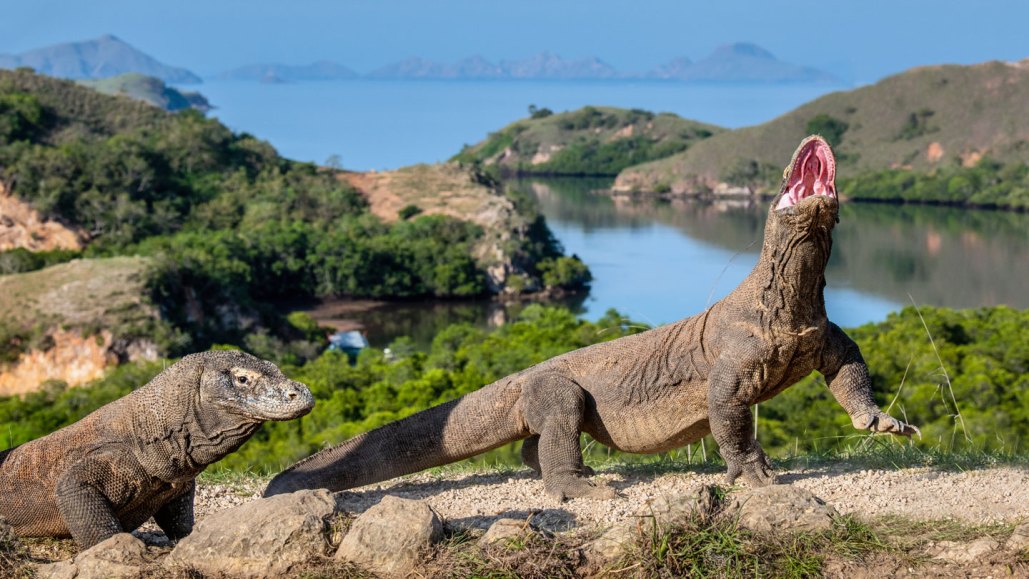Iron Coating Enhances Durability of Komodo Dragon Teeth

Komodo dragon teeth are ironclad. Literally.
The serrated edges and tips of the reptiles’ razor-sharp chompers are lined with a layer of iron, researchers report July 24 in Nature Ecology & Evolution. This metal coating may reinforce each tooth, helping Komodo dragons (Varanus komodoensis) safely tear through the flesh of deer or water buffalo.
Iron teeth aren’t unique to these reptiles — beaver teeth get their toughness from iron-infused enamel, says paleontologist Aaron LeBlanc of King’s College London. But in Komodo dragons, the iron is piped on top of the enamel, “sort of like icing on a cake,” he says.
LeBlanc and colleagues had set out to uncover what made the teeth of meat-eating dinosaurs good at cutting and used Komodo dragons as a modern comparison. The species is the biggest living reptile in the world and has small, blade-shaped teeth. Under the microscope, the team noticed orange stains on the tips and serrated edges of tooth specimens.
Chemical and structural imaging revealed that the tinge was actually a layer of iron. The teeth of other modern reptiles, including some other monitor lizards as well as crocodiles and alligators, have no visible signs of iron — though some species have a thin layer along the cutting edge, the team’s analysis found. The trait may be widespread among modern meat-eating reptiles, that finding suggests.
As for long-gone carnivorous dinosaurs, it’s unclear whether their sharp tooth edges ever had an iron shield. “Iron is literally the worst element to look at in a fossilized dinosaur tooth,” LeBlanc says. “It’s just everywhere.… If you bury a dinosaur tooth underground for tens of millions of years, iron is going to seep into every little bit of that tooth tissue.” The team hopes studying the Komodo dragon’s iron coatings in more detail could help answer the question.




